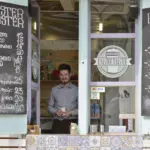Bulgaria’s currency, the lev, has been pegged to the euro since 1997 (initially to the Deutsche Mark and later to its successor). Yet despite this long monetary engagement, the actual wedding date—when Bulgaria formally adopts the single currency—has proved elusive. Now, after a series of postponements, the Balkan nation appears on track to join the eurozone on January 1, 2026.
The path towards euro adoption has been anything but smooth. The European Central Bank’s 2024 convergence report concluded that Bulgaria did not meet the criteria due to high inflation, causing a deferral of the original timeline.
But with inflation cooling and economic indicators improving, Bulgarian authorities submitted a request in February 2025 for an extraordinary assessment from European institutions to facilitate its eurozone entry.
Political drama surrounds what should be a largely technical process. In a controversial move on May 12, President Rumen Radev proposed a referendum on euro adoption, suggesting Bulgarians should vote on the question: ‘Do you agree that Bulgaria should introduce the single European currency ‘euro’ in 2026?’. The government immediately criticised this initiative, with one minister dismissing it as an attempt to ‘sabotage’ the country’s eurozone ambitions.
Parliament then swiftly crushed the president’s referendum proposal. On May 13, Nataliya Kiselova, the speaker of the Bulgarian National Assembly, rejected Radev’s proposal, stating it violated both the constitution and Bulgaria’s European Union treaty obligations.
The constitutional court had previously rejected a similar petition for a referendum on adopting the euro, reinforcing the legal precedent.
The Croatian model
Bulgaria can look to Croatia, which became the eurozone’s 20th member on January 1, 2023, for lessons on euro adoption. Despite initial public concerns about potential price increases, Croatia’s transition has been largely successful.
The impact of the euro changeover on Croatian consumer prices was “relatively small and of the same order of magnitude as that observed following earlier changeovers,” according to the European Central Bank, with studies suggesting it contributed only 0.2 to 0.4 percentage points to inflation.
The Croatian experience provides valuable reassurance to Bulgarians worried about price spikes. Beyond modest inflation effects, Croatia has seen several significant benefits.
According to Boris Vujčić, governor of the Croatian National Bank, euro adoption has “spurred Croatia’s additional trade and financial integration into the euro area and has made Croatia more attractive to investments.”
The country has also experienced greater economic resilience to external shocks.
Economic imperatives
For Bulgaria, euro adoption offers compelling economic advantages. The country’s currency board, which has maintained a fixed exchange rate with the euro for over 25 years, already limits monetary policy independence. Adopting the euro would eliminate the remaining currency risk, potentially attracting more foreign investment and reducing borrowing costs.
Recent economic data bolster Bulgaria’s case. GDP growth accelerated impressively to 2.8 per cent in 2024, up from 1.9 per cent in 2023, according to the World Bank. This growth was primarily driven by strong domestic consumption—both from households and government—despite underperformance in exports. More crucially for euro adoption, annual average inflation as measured by the Harmonised Index of Consumer Prices declined to 2.6 per cent in February 2025, comfortably meeting the Maastricht criterion of 2.7 per cent.
The country’s fiscal position, while loosened since 2020, maintains a headline deficit at precisely 3% of GDP in both 2023 and 2024—just at the Maastricht ceiling. Meanwhile, Bulgaria’s public debt-to-GDP ratio continues to rank among the lowest in the EU, less than half the 60 per cent threshold required by the criteria.
“Since we are already using a currency board tied to the euro, we get all the disadvantages of the eurozone without the benefits,” remarks Nikolay Vassilev, an economist. “We might as well complete the process and gain access to the advantages.”
Divided opinions
Yet not all Bulgarians are convinced. Public opinion remains split, with concerns that euro adoption might lead to price increases, similar to perceptions in other countries that joined the eurozone. Even in Croatia, a year after adoption, just 51 per cent of Croatians deemed the euro positive for their country in a Eurobarometer survey—the lowest percentage across the eurozone.
The debate often falls along familiar political lines, with nationalist and populist voices opposing further European integration while pro-EU parties champion it.
The Bulgarian Socialist party has been sceptical, while GERB (Citizens for European Development of Bulgaria) and other centrist parties support the move. In February, approximately 1,000 nationalist protesters clashed with police in Sofia, demanding the government abandon plans to join the eurozone.
The path ahead
Bulgaria’s government appears determined to proceed. Most of the legislative groundwork has been laid, with the law on euro introduction adopted in August 2024. The designs for Bulgaria’s euro coins have been approved, featuring culturally significant symbols like the Madara Horseman and St Ivan Rilski. The minting process awaits only final approval from EU authorities.
Euro adoption would follow Bulgaria’s full entry into the Schengen Area on January 1st, 2025—a significant milestone that removed border controls with other member states. Tourism operators report a boost in visitor numbers in early 2025, following the relaxation of border controls.
The fate of Bulgaria’s euro bid now rests heavily on the upcoming convergence reports from the European Commission and European Central Bank, expected in June. If these institutions confirm Bulgaria has met all necessary criteria, the country would be on track for its January 2026 target—pending final approval from EU member states.
Yet not the challenges have been left behind. The World Bank forecasts that economic growth will “slow down markedly in 2025-2026 due to global trade uncertainty,” with Bulgaria feeling the impact primarily through indirect effects on the wider EU economy and global activity. As raw materials represent 40 per cent of Bulgaria’s exports, any commodity price fluctuations would further expose the economy to external shocks.
This worsened economic outlook could threaten the attainment of the three per cent budget deficit target unless the government takes measures to curb expenditure.
More than a change of currency
For Bulgaria, euro adoption represents more than a currency change; it symbolises full integration into Europe’s economic core. As one of the poorest EU members, the country hopes the move will accelerate economic convergence with wealthier western European nations, much as it has for other eastern European adopters.
Coming shortly after the Schengen accession, euro adoption would complete Bulgaria’s long journey to become a fully integrated EU member state.
The World Bank notes that if Bulgaria does join the eurozone in 2026, this is anticipated to positively influence the country’s medium-term economic outlook. Yet domestic risks remain, including what the Bank describes as, “unabated growth of credit to households, mirrored by an ongoing construction boom”—factors requiring careful monitoring as the economy slows.
Twenty-six years after establishing its currency board during a financial crisis, Bulgaria is on the verge of completing its monetary transformation. If all goes according to plan, New Year’s Day 2026 will mark not just the beginning of a new year, but a new economic era for the Balkan nation.
Photo: Dreamstime.







